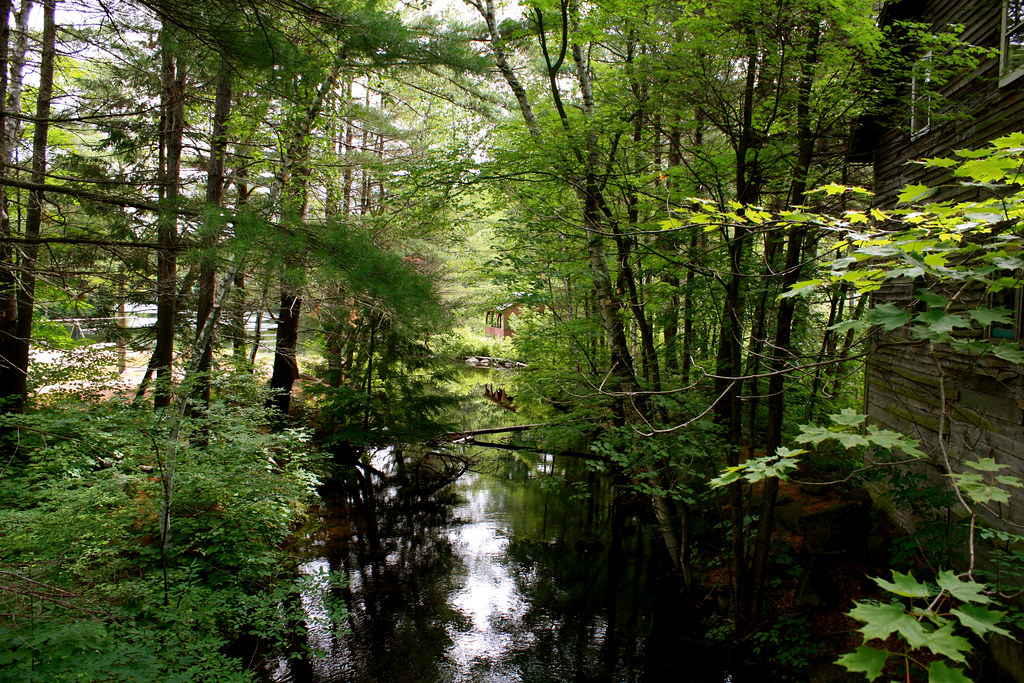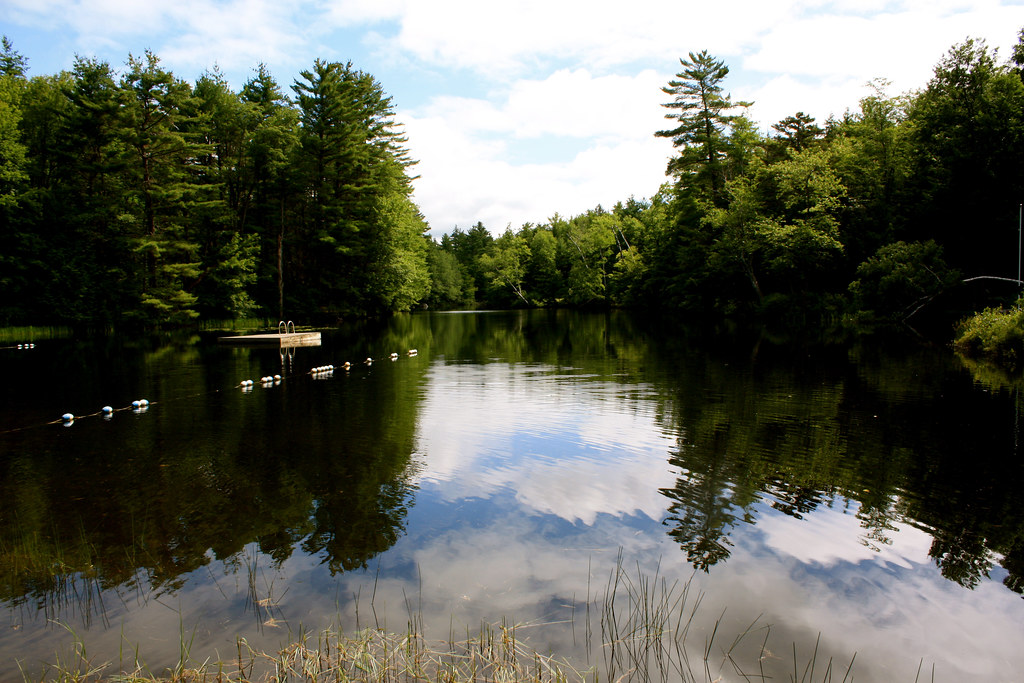This was the site of at least three tanneries over the years. Two tanneries were destroyed by fire (1837 and 1884). The tanneries used hemlock and/or oak bark to tan animal hides. The bark was pulverized and used to soak un-haired raw hides. "By 1874 the hemlock bark was worth more than the lumber." Around 1900 he tannery discontinued operation. By 1915, heavy snow had collapsed the roof. The building was dissassembled in 1920. The pond, full of natural tannin, also has remnants of the tannin used in manufacturing hides two hundred years ago. Source: Glimpse of the Past: A History of Wilmot, New Hampshire The town now has a beach where Wingnut has swimming lessons.
An interesting (for me) quote from the Wikipedia article on tannin: "The leaching of tannins from the decaying leaves of vegetation adjoining a stream may produce what is known as a blackwater river."
_/\_/\_
An interesting (for me) quote from the Wikipedia article on tannin: "The leaching of tannins from the decaying leaves of vegetation adjoining a stream may produce what is known as a blackwater river."
The Blackwater River flows across the road from where I now live in New Hampshire.


No comments:
Post a Comment
Thank you for leaving a comment on meeyauw's pad. I enjoy reading constructive comments, tips and ideas that help me improve my photographs.